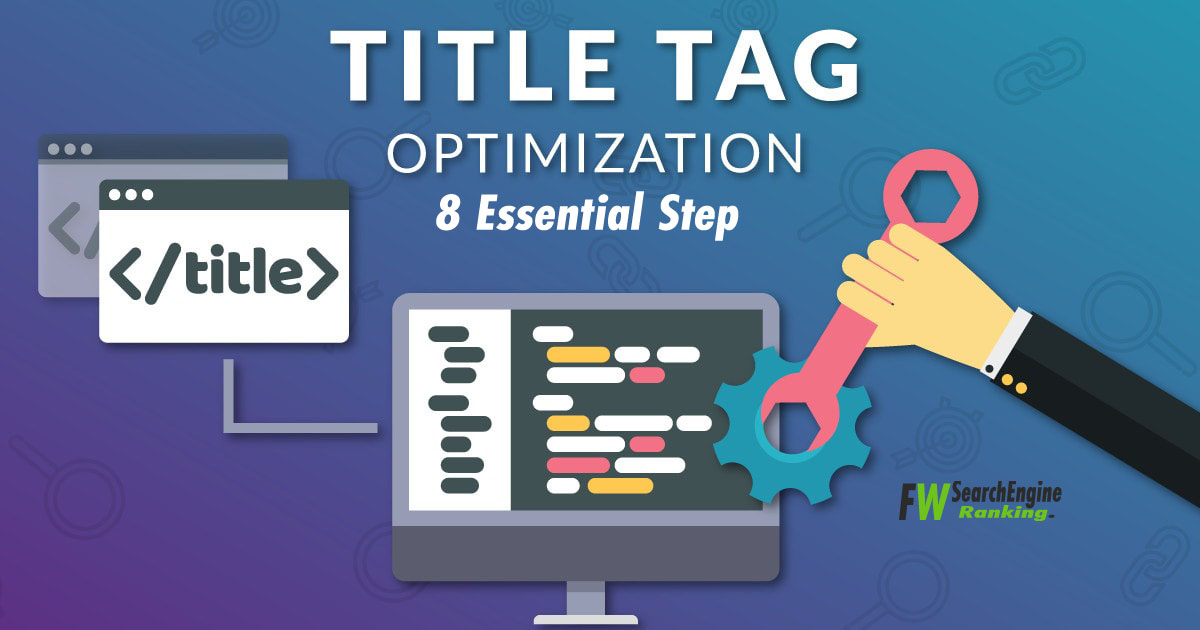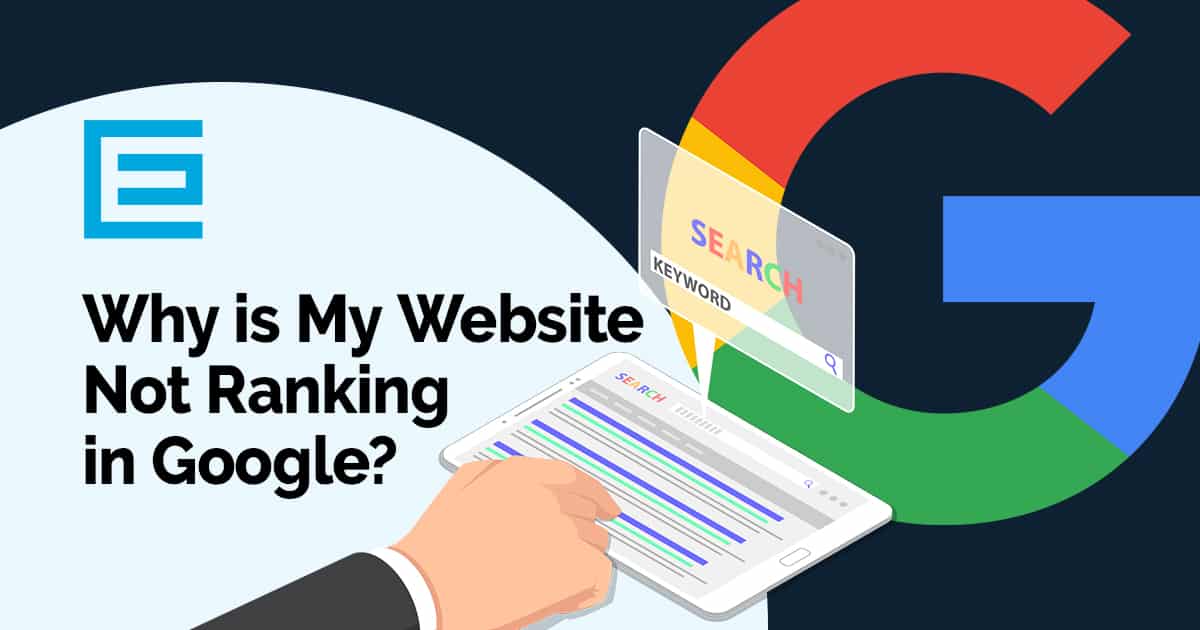The title tag is important for any SEO strategy to rank high.
Missing, duplicate and misspelled title tags can negatively affect SEO results.
Do not let this happen to you.
This article will help you understand what it takes to write and optimize an excellent title tag.
What is a title tag?
The title tag is an HTML tag that exists in the main section of each web page. It provides an initial clue or context on what the theme of the subject of the respective page is.
The title tag is highlighted on the search engine results pages (usually used as a clickable link) and in the browser window.
In addition to these two places, it is not as visible as other web content on a given page (for example, body copy, image content and other aspects) that the user will see immediately upon landing on the page.
Title tags are not a visual element that users will see on a web page; therefore, sometimes the title tag can be ignored.
At the same time, the title tag alone has little impact on organic rankings. No single element is magical or powerful, especially if its content is of poor quality or if it overlooked technical SEO.
Here are eight important things to keep in mind when optimizing your search title tags.
#1. The context of the page on the site.
Before you can write an optimized title tag, you must know where the page fits into the overall hierarchy of the site.
A title tag on the homepage will look very different from a blog post or product page.
For sites with many pages, it can be difficult to create different tags from one page to another. That’s why it’s important to map your site and know where each page fits in the context of your topic.
The deeper the page that goes to the site, the more specific it can and should be.
You can repeat words and phrases, but it must be more detailed with each step of the site you access.
An example of e-commerce title tags at different levels of the site that have the appropriate context:
- Home page: Godfather Gifts and Exclusive Male Gifts for The Man Registry
- Product category page: Groomsmen Barbecue Sets & Utensils Gifts from The Man Registry
- Product page: Custom 5-piece barbecue set by The Man Registry
#2. Thematic relevance within the page.
The next step in understanding where the page fits into the overall hierarchy of the site is to evaluate the content of the page.
The title tag is more impressive for search engines and users when presenting the theme of the page, and the same important keywords are used in the body copy, the image alt attribute, the meta description, the URL and other aspects of the page
It is a useless exercise to ignore the content of the page when writing the title tag if it contributes to a higher bounce rate and cannot give more relevance to the theme of the page.
You should use words in the title tag, which are also used in other parts of the page to link the topic.
#3. Unique tags
Duplicate title tags are not useful for search engines or searchers.
If you have duplicate tags, you can see them in the Google Webmaster Tools reports or in the Bing Search Console, and you will often find that search engines have chosen to ignore your title tag and use other content found in your Page for your blue link text in SERP.
When several pages have the same tag, these tags are useless for the search engine.
You can use the data provided in the Google Search Console and Google Webmaster Tools to find out where there are problems and perform your own tests through any number of online auditors and tracking tools.
If you have duplicate tags on your site, add custom save tags to your SEO action plan.
#4. Use dynamic options when possible
If you have a large site or one that has a lot of dynamic data, such as an e-commerce site, find ways to semantically code your tags.
Most content management systems and website platforms will automatically generate the title tag to start.
If you want to replace or customize the default escalation title tag, work with the developer or site platform configuration to find ways to add more details and customize at different levels.
The more you can scale and you don’t have to manually manage hundreds or thousands of tags, the better.
An example of a dynamic structure could include standard text on all product page tags, but with the specific product name in the database.
For example, it could be “groomsmen [product name] present in The Man Registry”. The “product_name” in parentheses would be a variable that would fill this part of the title with the actual name of the product in the database.
In this case, you would not have to manually write all the product title tags and make sure they are unique. In cases where you have the same products with variations or attributes such as different colors, you can also look for ways to add more database variables.
#5. Use of the keyword of the intent Searcher
We can all relate to times when we really want to find an answer to something specific, but sites with better ratings are answering a different question. The same goes for the great content that goes unnoticed.
Knowing what your audience is looking for and how you are looking is essential for optimizing the title tag.
If you don’t know what words and phrases people use when you search, you run the risk of assuming you are wrong.
Do not skip keyword research or skip it when optimizing title tags.
You don’t have to worry about all the literal versions of a keyword or phrase in the current context-based SEO era, but you can’t ignore the search engine and its intentions either.
Your goal for an optimized title tag is to match the text you use with what you are looking for, as long as the perceived intention is the focus of the page content.
#6. Call to action in SERP
Remember that the title tag will be displayed as the text in the blue link on the search results page (SERP).
This is a prominent sector and the message presented here greatly affects the decision of the researcher to click on the site or move on to the next search result.
You should concentrate on answering the question, need or desire of the researcher.
Having a clear vision of what your page is and what is the desired result for you and your visitor is essential.
If you are trying to achieve many business goals on a single page, it can be difficult to focus clearly on what the call to action (CTA) should be. If you think this is the case, consider dividing your content into more topics and pages.
Like the art of writing a solid PPC text ad title, the title tag must match the search engine’s intention to get its click.
When writing your title tag, keep in mind that Google truncates it with 70 to 71 characters. The user will not see any words beyond this character count.
Put your important words and phrases there. Be concise, direct and prioritize important words so that they appear as soon as possible in the title tags.
For example, you can have the title tag of the home page with a medium sound of: “Gifts for groomsmen and gifts for men exclusive to The Man Registry.”
You can try more practical language, such as “Buy the best groomsmen and exclusive gifts for men in The Man Registry”.
#7. Don’t strain yourself too much.
Avoid repetitive-looking spam titles.
Resist the temptation to overdo it with your title tag.
Search engines focus on context, not a literal use of keywords, frequency, and density.
Choose words that are clear to the topic and intention of the page and paste them into the title tag.
You can use longer form areas of the page to develop and develop this context.
An example of a dangerous title tag would be: “Godfather Gifts, Godfather Gifts, Gifts for Men, Unique Gifts”.
Exaggerating and repeating words is a quick way to find problems.
#8. Keep the perspective of the impact of the title tag
Don’t stress too much the importance or impact of the title tag.
While you can see a slight increase in the optimization of all the title tags on your site, you cannot expect the title tag to be the key to SEO success.
Holistic search optimization is much more important.
In many cases, the optimization of the title tag is just the beginning or an entry point until you are aware of the SERPs, making small adjustments and having the luxury of obsessing with small text changes to see how they affect them. the rankings in one position at a time.
Conclusion
The title tag is just one of the many elements that are part of a complete SEO plan.
In a vacuum, the title tag is not a significant detail, but working in context and in conjunction with all other factors on the page on a single page and in conjunction with all the pages of a site can lead to the success of getting more traffic.
Through the direct impact of CTAs on SERPs to indicate what the page is about, the title tag can be useful.
Problems with title tags on a site, including missing, very short, duplicate and complete tags
Too many repetitive or otherwise unhelpful words can indicate a bad SEO and a bad overall user experience.
So make sure your title tags always have the right place in your optimization plan.



